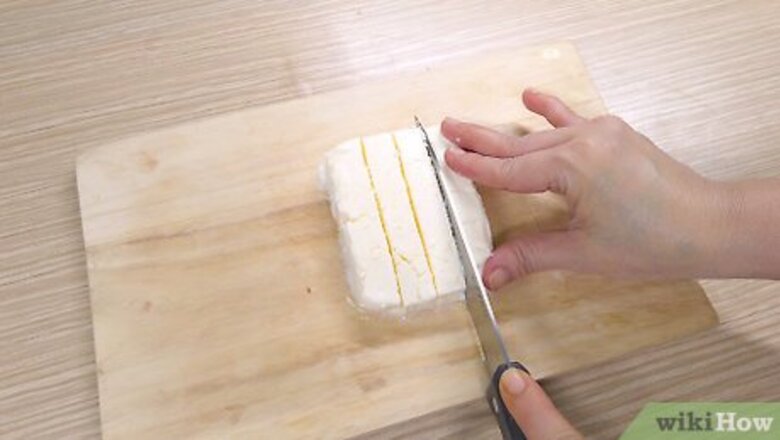
views
Softening Cream Cheese at Room Temperature

Cut the cream cheese into cubes to help it soften more quickly. If you leave the cream cheese in a block, the outside will start to soften while the inside stays cool, slowing down the softening process. To avoid this, use a butter knife to slice the cream cheese into roughly 1 in (2.5 cm) pieces.
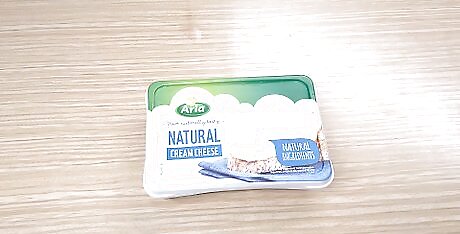
Leave the cream cheese at room temperature for 30 minutes to soften it. If you have the time, you can soften cream cheese by simply storing it at room temperature for about 30 minutes. Once the cream cheese reaches room temp, it should be noticeably softer. If it still feels cool to the touch and isn't soft enough, let it sit another 20-30 minutes. You can leave the cream cheese in its original container or you can transfer it to a new one. If the cream cheese still isn’t soft enough after an hour, you may need to stir in another ingredient like milk, lemon juice, or whipped cream to soften it.
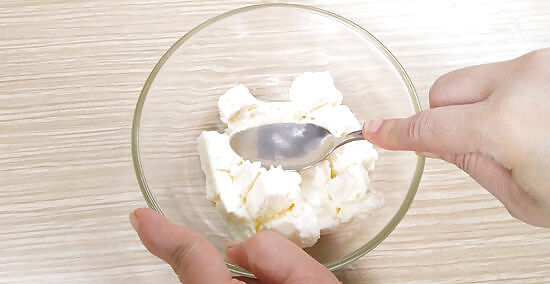
Stir your cream cheese for about 5 minutes to soften it manually. Spreading the cream cheese out can help it soften without the addition of any heat. For instance, you can place the cream cheese in a bowl, then use the back of a spoon to stir it. The more you stir, the softer the cheese will become. If you have a stand mixer, beat the cream cheese with a paddle attachment for about 60 seconds.
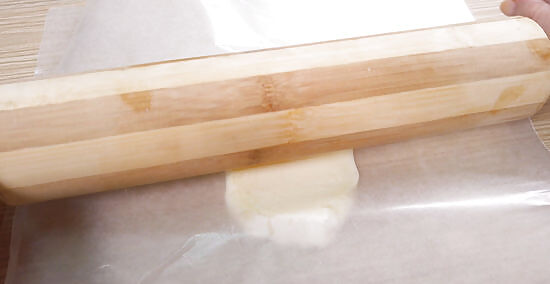
Spread the cream cheese out thinly to help soften even more quickly. For an even faster approach, try placing the cream cheese between 2 sheets of parchment paper, then break it up with a rolling pin or the flat side of a mallet. As the cheese spreads out, it should become soft fairly quickly. Keep in mind that you will have to scrape the cream cheese off the parchment when you’re finished.

Press a spoon into the cream cheese to see if it’s soft enough. Once you've warmed the cream cheese, take a few seconds to check that it is the right consistency. Press the back of a spoon into the cream cheese, either through the wrapper or directly into the cheese itself. If it gives way easily and offers no resistance, it should be soft enough for most recipes. On the other hand, if it's still firm, you may want to warm it a little more.
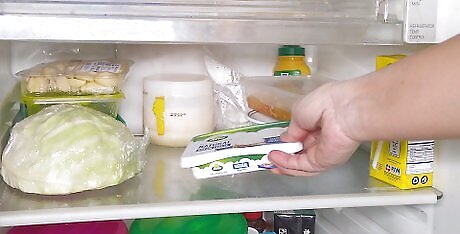
Don't let softened cream cheese sit for more than 2 hours. Cream cheese has a fairly long shelf life: in the fridge, it can sometimes last for up to a month and in the freezer it can easily last twice that. However, like many dairy products, it spoils fairly quickly at room temperature. After you warm your cream cheese, try to use it as quickly as possible, returning any leftovers to the fridge. Do not leave cream cheese at room temperature for longer than 2 hours. If it’s been left out longer than that, consider throwing it away.
Using Heat to Soften Cream Cheese

Microwave the cream cheese in 15-second increments to soften it quickly. Scoop your cream cheese into a microwave-safe bowl or dish. With your microwave on high power, heat the cream cheese for about 15 seconds, then check it. If it isn’t soft enough, continue microwaving it in 10-second increments, checking it after each heating session. To heat larger portions of cream cheese, add 10 seconds to the microwave time for each additional 8 ounces (225 g). If the cream cheese gets too soft, transfer it to a cool bowl, then leave it at room temperature for about 5 minutes. You can also place it in the refrigerator for 2 minutes, if you prefer. If your cream cheese came wrapped in metallic packaging, do not place the foil in the microwave. If any of the liquid, known as whey, separates from your cream cheese when you heat it, just add it into your recipe along with the solids.
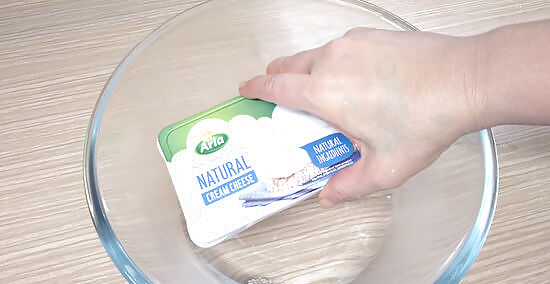
Place the cream cheese in a water bath for 10 minutes to warm it gradually. Fill a bowl with lukewarm water, then place the package of cream cheese into the water and let it sit for 10 minutes. Leave the cream cheese in the water for an extra 10 minutes if it needs to soften more. If it still isn't soft enough after that, add warmer water to the bowl. However, do not use hot water, which can melt the solids in the cream cheese. If the cream cheese has already been opened, put it in an airtight plastic bag or wrap it tightly in cling wrap to prevent water from getting in. If the cream cheese was frozen, use cold water instead of lukewarm. It will take longer, but the cold water will help the cream cheese heat more evenly.
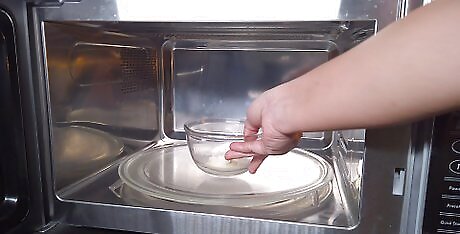
Avoid over-heating the cream cheese to preserve its texture. It's possible to warm cream cheese too much when you’re trying to soften it. The solids in the cream cheese can melt, leaving you with a soupy, runny mess, and unfortunately, it might not return to its normal texture once it’s cooled. Prevention is the best cure here. Use gentle heat and short warming periods to prevent over-heating. Increase the temperature and time gradually if you need a softer texture.
Thinning Cream Cheese With Other Ingredients
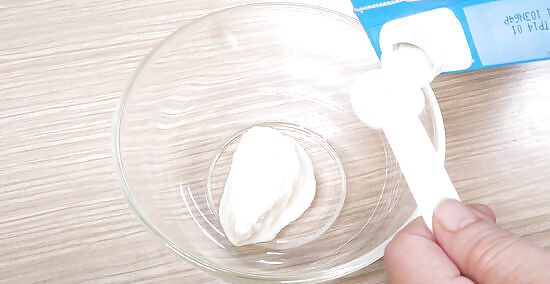
Add milk or cream to soften the cheese without changing the taste. Place 8 oz (225 g) of cream cheese in a bowl, then add about 1 tsp (4.9 mL) of milk or unsweetened cream to the cheese and stir it well. If you need to, add a little more until the cream cheese is the consistency you’re looking for. These neutral-flavored dairy products are perfect for thinning out cream cheese without affecting its taste much. They may make the cream cheese slightly less tangy, but the difference will not be noticeable in most recipes.
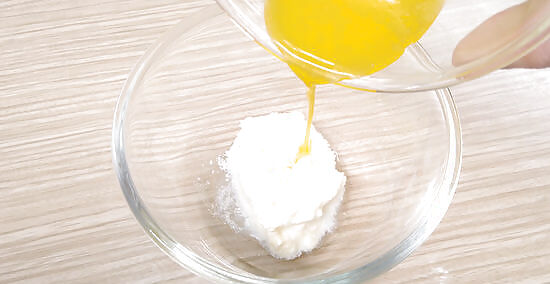
Add melted butter for smooth, thin cream cheese. Butter is another good choice for thinning out cream cheese. To thin an 8 oz (225 g) package of cream cheese, melt about 1 tbsp (14.2 g) of butter in the microwave. Then, combine the butter and cream cheese in a separate bowl, stirring well. Add a little more butter if the cream cheese isn’t soft enough after the first addition. Don't heat the cream cheese together with the butter unless you want it to melt as well. Use unsalted butter if you can, as salted butter will change the taste of the cream cheese.
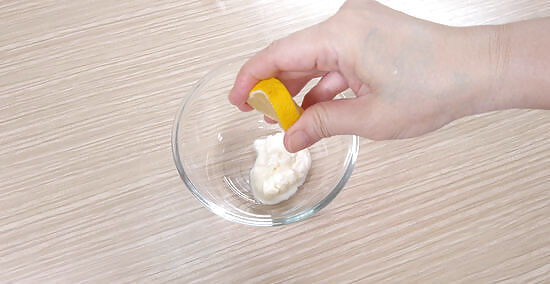
Try adding 1 teaspoon (4.9 mL) of lemon juice to add a little tartness. Lemon juice won't just thin out solid cream cheese—it will also give it a noticeably tart taste. This can be delicious in frosting and other sweet and sour desserts, although it won't go well with every dish. Just stir in about 1 tsp (4.9 mL) of lemon juice for every 8 oz (225 g) of cream cheese.
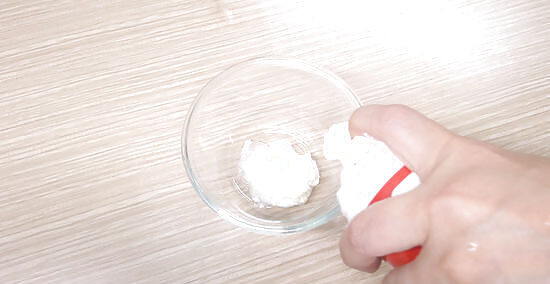
Mix the cream cheese with whipped cream to add sweetness. A big spoonful of fluffy spread like whipped cream can be perfect if you need to thin cream cheese for frosting. This will give the cream cheese a mildly sweet flavor, rather than adding the tartness of lemon juice. Start by adding 1 US tbsp (15 mL) of whipped cream to 8 oz (225 g) of cream cheese, then add more if you need to.
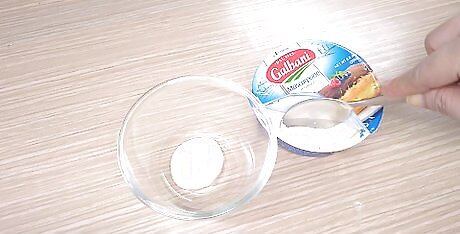
Mix the cream cheese with mascarpone to soften it slightly. Mascarpone is an Italian spread that is very similar to cream cheese. However, it’s a little lighter and softer. Because it's so close to cream cheese already, mascarpone makes a good choice when you want to make cream cheese just a little softer than it already is. The effect is subtle but noticeable—perfect as a topping for desserts like French toast and bread pudding.













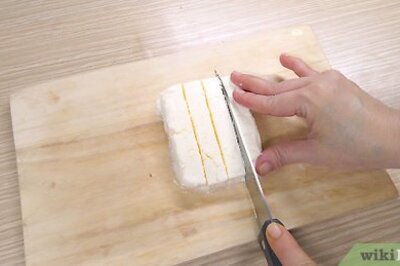





Comments
0 comment